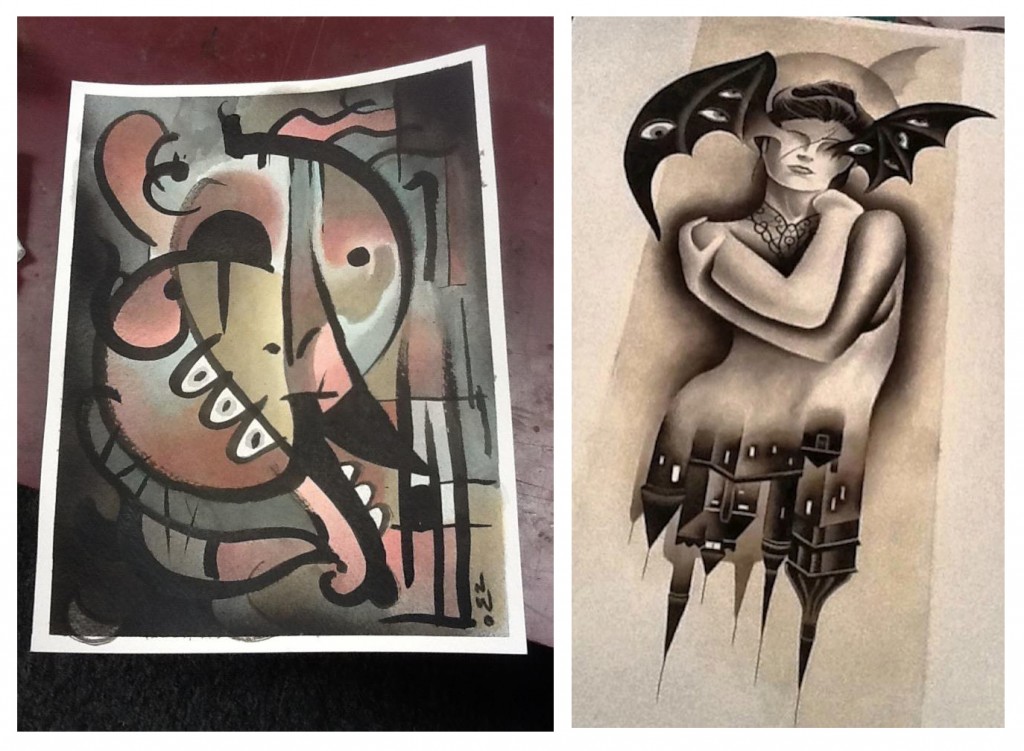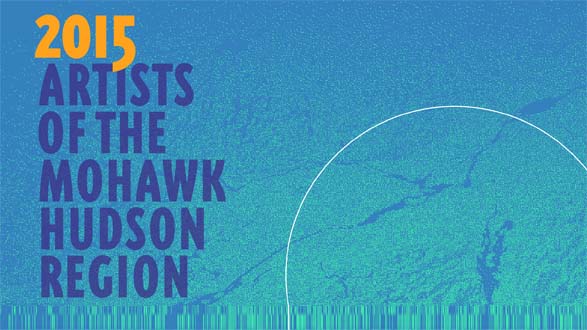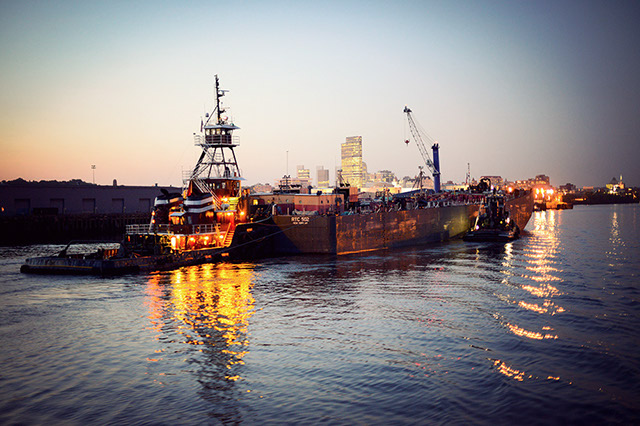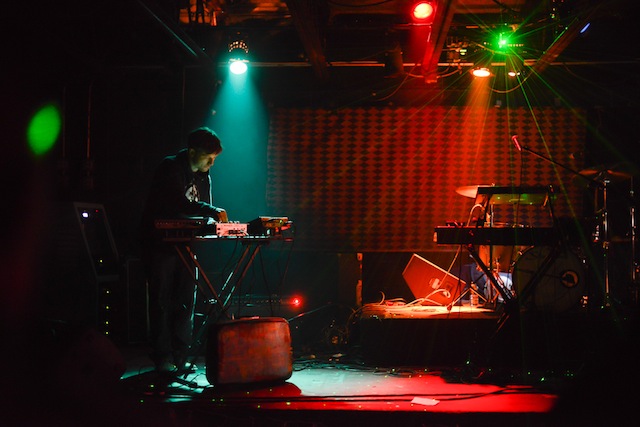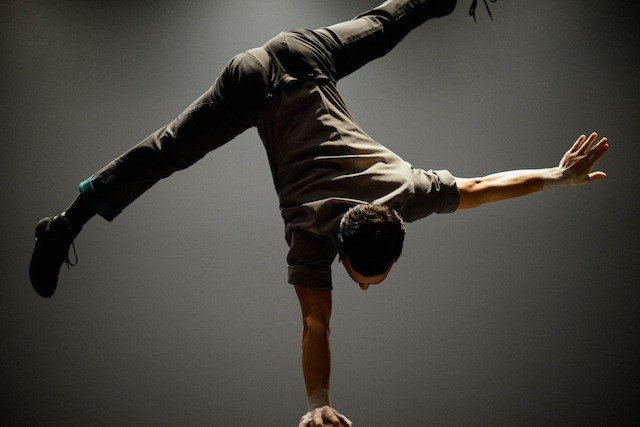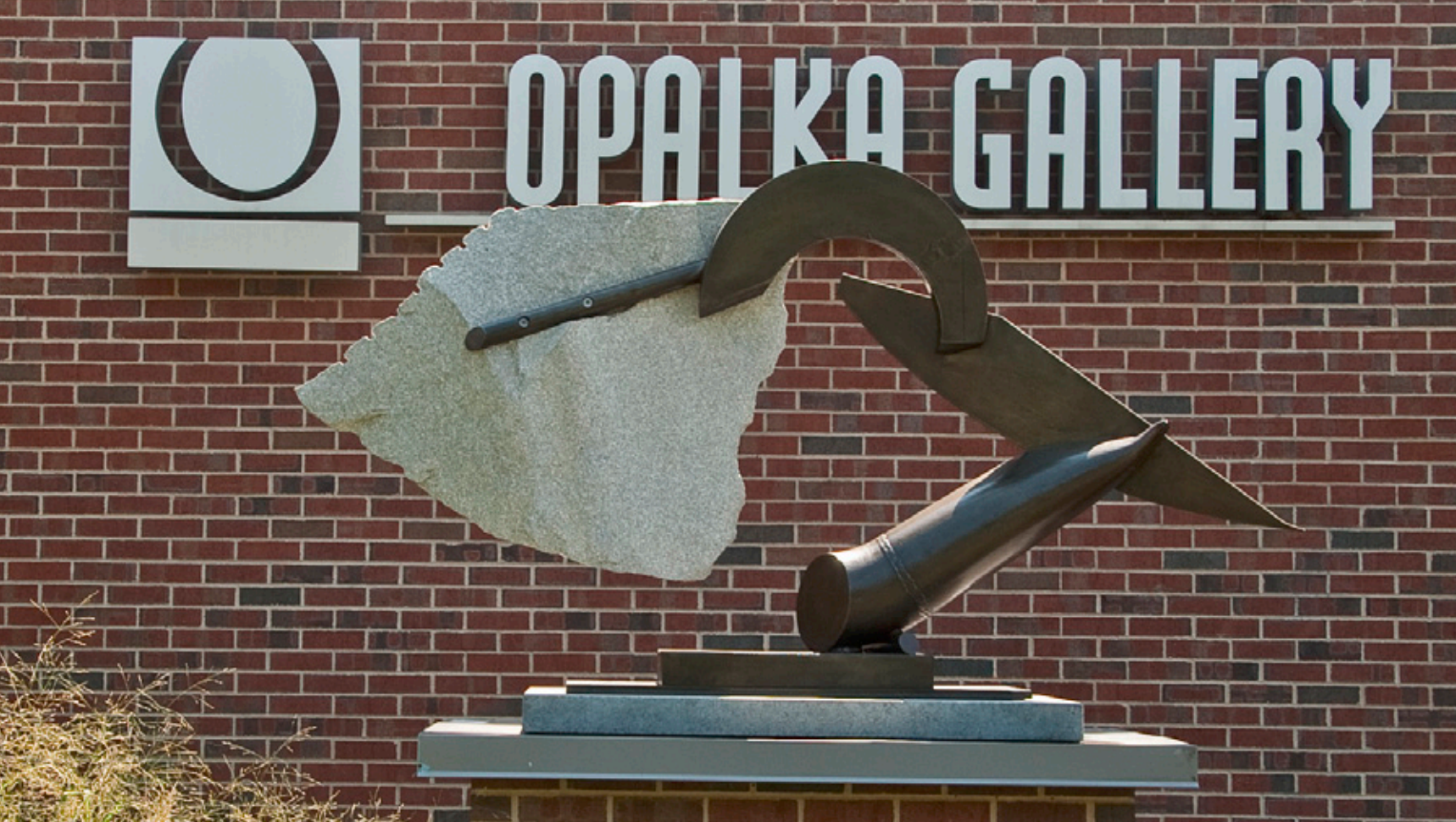Artist Spotlight: An interview with Nate Osborne
Earlier this week, I was browsing through a random fashion blog when I came across a photo of someone wearing a novelty t-shirt that read, “No Time For Art,” across the front. I hated it. If anything, it was a reminder that it is absolutely imperative that we make time for art, regardless of in what form, creating or observing. I understand that people get busy (or feel ‘too busy’) but the idea of ‘not having time’ to appreciate the infinite array of visual elements in our culture in general just made me think that we must reevaluate how we are spending our time and what we are placing value on. Plus, I really hated that t-shirt for making me think so much about it. Anger, on multiple levels, really.
My friend Sev Statik pointed out something a couple months ago that has continued to stick with me and also accidentally makes me feel better about that bullshit novelty t-shirt slogan. He said, “I want to meet you in the act of your craft – I want to meet you while you are writing, performing, on stage, at your art show, in your studio, at a record shop, on the field, wherever. That’s where I want to meet you.” It makes me feel instantly grateful, because when I break it down for myself, I really have met so many people I call my friends through catching them in the act of doing whatever it is that they do.
Nate Osborne is no exception to this. I first met Nate at an art show years ago where he was showing his work in conjunction with First Friday in Albany. His work instantly drew me in, mainly because of how clear it was that his work was his passion preserved on paper. I truly believe that when people put serious time and dedication into their work, other people will take notice. Nate’s artwork, in my opinion, has only gotten better with time and with each new piece, all while showing no signs of slowing down.
Currently working full time at Full Effect in Troy as a tattoo artist, Nate is constantly churning out new, quality pieces of artwork and someone seriously needs to get him a solo art show of his own stat. You can next see Nate’s work displayed and available for sale this Sunday, June 16th at the Holiday Inn on Wolf Road for this year’s 6th Annual Albany Comic Con.
Hit the jump to read our full interview and check out more from Nate. You may also view his work on Instagram and in his digital portfolio at Nate Osborne Artworks.
How would you describe your subject matter or the content of your work? What themes occur/reoccur in your work? What mediums do you typically work with?
The subject matter in my work is always changing because there’s so many subjects I’m interested in, but it usually reflects my current and ongoing interests, or where my head just happens to be.. I try not to stick to one particular subject for very long. As soon as I feel like I’m getting into a rhythm of something, I abandon it and move on to something else. Most of the time I’m painting for the sheer visual experience or release, but some reoccurring themes I do use are mortality, balance, sexuality, romance, folklore, nature… it all depends on what I’m feeling.
These days, I pretty much work exclusively with ink and ink washes. The only time I use watercolors is when I’m layering color. I’ve been using coffee stains a lot lately too for more subtle tones and I’ll use spray paint to get cheap airbrush effects for backgrounds. I started painting in an abstract expressionist style so it’s been fun to apply more illustrative techniques to what I know from that.
Do you ever document your process from beginning to end at all when working on a new piece? Or tell us a little bit about your planning process and why it’s important to you. How do you know when a concept or new creation is ‘finished’?
I don’t always document the entire process but I always take progress photos as I work. Not just to post online, but I like to document what I’ve done for the day, and then take them home to analyze and critique to figure out what I like or don’t like, what I can do better, gather research… I think it’s important to do that so you can also see your work evolve in front of you, and learn why. If you rush through something you’re robbing yourself of that experience.
My planning process always starts with a fragment of an idea. It’s never a complete concept. I’ll take that fragment and incorporate it into whatever I’m currently obsessed with. I’ll just splice together different elements until I get more of a solid idea. I like to have a certain authenticity with the subject matter, so I’ll spend hours doing research on the history or the specific elements that make it authentic to whatever it is. When I know more about how things look, I’ll try to find commonalities between the elements; colors, details, composition, etc. and figure out a way to make it all work together. I plan the whole thing mentally before I draw up the final design.
The planning process for me is a way to get everything the way I want it, work out any composition or tonal problems, learn and research techniques, think about what I want to express and how.. it’s basically ALL the work. When it comes time to do the painting I know how everything is going to look, for the most part, and makes the painting experience a lot more stress-free and enjoyable. It is also a way of guaranteeing good work every time as opposed to jumping in and hoping it turns out alright. It pays to plan.
I could honestly spend forever on a design, but eventually you reach a fatigue point where the design tells you its ready to move on. Depending on what style I’m working in that also will help determine how far to take something.
What risks have you taken in your work, or any particular challenges you’ve overcome that you’d like to talk about?
I definitely take risks in every piece I do because I try to make each piece a “first. I don’t like to repeat myself. Even if it may be another interpretation of a common theme, I’ll try to attempt something new each time and make it more difficult. That way, I always progress and don’t risk becoming predictable. I think one of the biggest challenges I’ve had to deal with, and still do, is self-confidence in my work and my life. I went through a lot of shit as a kid that is pretty much still engrained in my head. Also living with Aspergers syndrome and not knowing it till adulthood created a lot of post-traumatic stress I still deal with. But over time I’ve learned to focus my frustrations and energy into my work which has been the biggest form of personal therapy. I think some of the best artists in the world are those that are working harder to make up for whatever they think they lack.
Talk a little bit about your introduction to tattooing – when did you first decide you wanted to learn the craft and how did you get into it? What’s your favorite thing about working as a tattoo artist?
I remember always being aware of tattooing through being exposed to tons of Japanese art and culture as a kid. I was always into Japanese tattoos. As I got older and started getting into punk rock, tattoos came back into the picture. I was already really into comic book art and was doing a lot of silk screening at the time, so the graphic imagery was naturally attractive to me.
I got tattooed when I first turned 18, just some black work flash I drew in art class. I was more interested in seeing how it was done than what I actually got. I reluctantly went away to college for a year where I studied sociology, specifically art sub-cultures. I thought I sucked as an artist so I didn’t even bother applying to art school, not that I really had any interest. I had a professor that was really into tattooing and punk rock, so we would hang out and talk a lot. She exposed me to some shops in NYC like Adorned and always supported my interests. It was entertaining for a while but eventually I asked myself, “why am I learning about tattooing in college? This is so pretentious and lame. So I left and looked for an apprenticeship.
Tattooing gave me the opportunity to practice art on my own terms, make a living, and study multiple styles that I otherwise may have avoided. The best thing about being a tattooer is really having the freedom to be your own person and find your own direction with whatever you want to do. I can travel around and work in different places. I worked on the Lower East Side of Manhattan all last year on a part-time basis and could still tattoo upstate and work on my artwork.
What are you currently working on? What about using as reference, listening to or reading to help inspire your art?
Right now I’m in the middle of painting a lunar landscape and planning at least 3 other paintings. There’s a couple other commissions I need to do for friends too. My big ongoing project is for an art book I want to publish of various vampire illustrations. I figured it would be a good way to include all my styles and influences into one curated assignment. As an artist, I think it’s good to impose guidelines and boundaries on projects as a way to be more creative. Too much freedom is just chaos, and chaos is just energy without direction.
For reference, it really depends on what I’m doing. I definitely use a lot of photo reference for figurative pieces. I constantly look through all sorts of art books just exposing myself to images for future use. Whenever I’m not painting, I’m always looking at stuff. Music is a really big influence on what I choose to paint. Whatever I’m listening to will put me in a certain mood, I’ll look at stuff that corresponds with how I’m feeling and go from there. Devil music always works.
What are your main sources of inspiration? How do you remain motivated in your studio/work space?
Man, there’s so many things… I guess the main sources though would be things that are connected to my childhood; Japanese art, comic books, punk rock, medieval folklore, isolation, death, nature. Learning about other people with similar backgrounds who learned to turn whatever wreckage in their lives into something beautiful gives me a lot of inspiration too. For the most part I’ve never had much of a problem staying motivated in the “studio. I think I have a harder time taking breaks and relaxing. One of the benefits of Aspergers syndrome is even though my brain can only focus on one task at a time, it naturally operates at 150+%. I just allow myself to become a kid again and be transported to whatever place I’m painting. It’s painful coming back to the real world, so I’m always planning my next escape.
What advice has really stuck with you? What was the source? Who has taught you the most about your art?
It’s hard to really say what has been the best advice or who has taught me the most. So much has been absorbed on my own through second hand sources. As corny as it sounds, my mom has always told me all I need to do is be myself and the rest will come. I think in today’s world “being yourself, your true self, is one of the most original and dangerous things you can do. I’ve never wanted to be anything else than who I am. Whatever comes from that is just a bonus. Other than that I just tell myself, “don’t stop till it looks right, and never settle for anything less than the standard you compare yourself to.
When it comes to art direction and people I model my approach after I think of; NC Wyeth, Alex Ross, Bruce Timm, Jackson Pollock, de Kooning, Grime, Ed Hardy, Frank Miller, Bob Kane, Kuniyoshi, Hiroshige..
Thank you again Nate!




